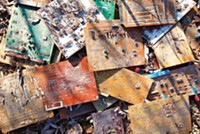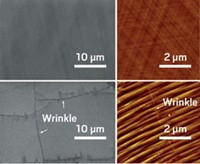Advertisement
Grab your lab coat. Let's get started
Welcome!
Welcome!
Create an account below to get 6 C&EN articles per month, receive newsletters and more - all free.
It seems this is your first time logging in online. Please enter the following information to continue.
As an ACS member you automatically get access to this site. All we need is few more details to create your reading experience.
Not you? Sign in with a different account.
Not you? Sign in with a different account.
ERROR 1
ERROR 1
ERROR 2
ERROR 2
ERROR 2
ERROR 2
ERROR 2
Password and Confirm password must match.
If you have an ACS member number, please enter it here so we can link this account to your membership. (optional)
ERROR 2
ACS values your privacy. By submitting your information, you are gaining access to C&EN and subscribing to our weekly newsletter. We use the information you provide to make your reading experience better, and we will never sell your data to third party members.
Materials
New Method Grows Nanowires At Record Pace
Gas-phase aerotaxy technique grows tiny semiconductor wires on the fly
by Lauren K. Wolf
December 3, 2012
| A version of this story appeared in
Volume 90, Issue 49
A new gas-phase synthesis technique grows semiconductor nanowires on the fly at a rate of 1 µm per second—20 to 1,000 times faster than traditional methods (Nature, DOI: 10.1038/nature11652). The approach could enable low-cost industrial production of next-generation solar cells and batteries. To achieve the improved growth rate, researchers led by Lars Samuelson of Sweden’s Lund University begin with gold aerosol nanoparticles, which they heat and pass into a gas reactor tube. These gold seed particles combine with gallium from (CH3)3Ga and arsenic from AsH3 to form tiny GaAs wires as they flow through the tube. Changing the size of the gold particles, the tube temperature, and the reaction time affects the quality and dimensions of the nanowires produced by this method, called aerotaxy. The limitation of traditional gas-phase epitaxy methods is that they grow nanowires on substrates in batches, rather than continuously, says Brian A. Korgel, a chemical engineer at the University of Texas, Austin. This new approach, Korgel adds, “is a big step toward future nanowire applications that will require large amounts of material.” The Swedish firms Sol Voltaics and QuNano have both filed patents related to the technique.




Join the conversation
Contact the reporter
Submit a Letter to the Editor for publication
Engage with us on Twitter